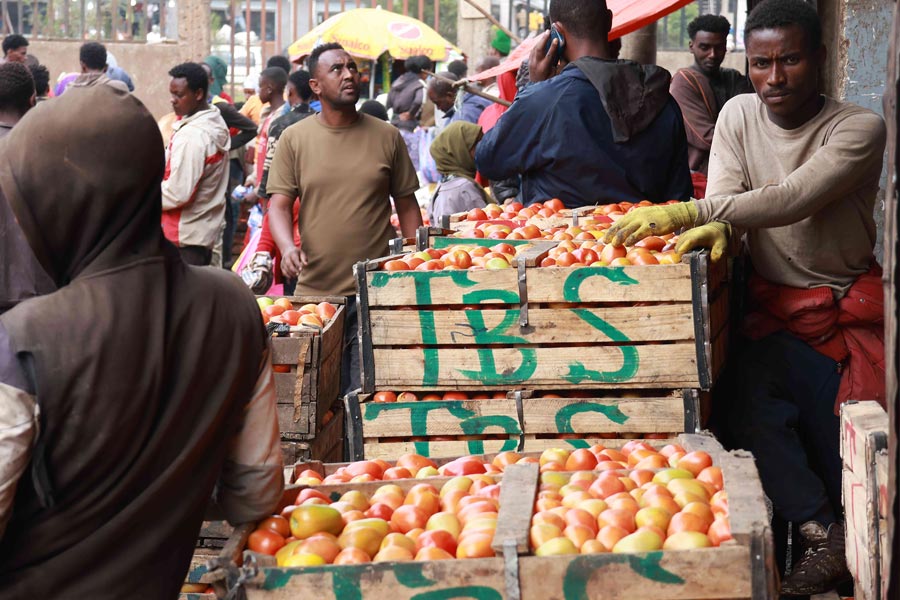
Fortune News | Nov 09,2024
May 11 , 2019
By Haben Mehari
Parliament recently ratified the African Continental Free Trade Area, which would do away with quotas and tariffs when trading within the continent. Requiring ratification by 22 countries, this made Ethiopia the 21st to get on board with this grand ambition. This agreement is expected to create a market of one billion people by increasing competition, improving productivity and expanding trade destinations.
The preliminary finding of the African Regional Integration Index, which monitors the status of economic integration, indicates that regional integration remains low. Kenya scores the highest, while Ethiopia ranks the lowest, even behind Eritrea. Even though Ethiopia has been an outspoken proponent of African unity, there is a path yet to be walked in terms of economic integration.
Regional Integration in Southeast Asia started with a bottom-up approach, with businesses driving the agenda and the government following suit through policy initiatives. The Association of Southeast Asian Nations (ASEAN) consists of Cambodia, Indonesia, Laos, Malaysia, Myanmar, Philippines, Singapore, Thailand and Vietnam. Formerly national production processes are now unbundled and dispersed to lowest cost locations throughout the region.
Such initiatives have allowed ASEAN members to achieve a high level of regional specialisation in sectors such as electronics. The region has now developed a global competitive edge in this regard. Efforts towards the integration of services markets and investment have facilitated the smooth movement of highly-skilled service suppliers, intra-corporate transfer and professional and technical staff.
The launch of the ASEAN Exchanges, which combined economies valued at two trillion dollars in gross domestic product (GDP), opened a market for close to 600 million consumers and an opportunity to invest in the top 200 performing stocks from Southeast Asia.
This has also been implemented in West Africa with Bourse Regionale des Valeurs Mobilieres (BRVM), a regional stock exchange founded in 1998. Now its member countries are also moving toward a common currency, the Eco. The East African Community (EAC), which is a regional intergovernmental organisation of Burundi, Kenya, Rwanda, South Sudan, Tanzania and Uganda is also pursuing a regional stock exchange called the East African Securities Exchange and a monetary union.
Regional integration can also figure into Ethiopia’s decision to privatise. The best way to do this is to go public, through the offering of shares in a stock exchange. This can prove to be a great opportunity for the nation in moving up the regional integration index.
A partnership and integration with a regional securities exchange can help bypass capacity limitation, capital market experience and simplify processes that pose significant implementation risks. This would also involve adopting the same rules, regulations and operating procedures. It would be beneficial both in terms of making the stock exchange establishment process simpler and also assure we have the exchanges well-developed policies, procedures and credibility. The exchange would benefit by creating a bigger, more diversified and appealing investor offering. It is a win-win for all players.
The government's push to modernise the economy has had one great constraint - the lack of modern financial infrastructure. To overcome this challenge and create new opportunities, regional integration is key. If pursued correctly, the stock exchange formed in Ethiopia can have a high market capitalisation.
Ethiopia already leads the continent in foreign direct investment. Imagine an Ethiopia with a robust stock exchange, a collaboration with a regional exchange or a well-capitalised one like the Nairobi Securities Exchange, which in turn is collaborating with the London Stock Exchange. This will give our young stock exchange well-developed policies, procedures and credibility. It would also pave a path toward regional integration, which is a much more sustainable means of becoming a lower middle-income country.
Regional economic integration has the effect of modernising economies by offering a larger consumer base and massive resources to pool from, writes Haben Mehari (haben.mehari@aiesec.net), an entrepreneur and a graduate student at Addis Abeba University.
PUBLISHED ON
May 11,2019 [ VOL
20 , NO
993]


Fortune News | Nov 09,2024

Radar | Apr 24,2023

Fortune News | Oct 19,2019

Radar | Oct 30,2021

Commentaries | Mar 30,2024

Commentaries | Mar 02,2019

Agenda | Feb 17,2024

Commentaries | May 18,2024


Commentaries | Jan 09,2021

My Opinion | 131499 Views | Aug 14,2021

My Opinion | 127855 Views | Aug 21,2021

My Opinion | 125833 Views | Sep 10,2021

My Opinion | 123463 Views | Aug 07,2021

Dec 22 , 2024 . By TIZITA SHEWAFERAW
Charged with transforming colossal state-owned enterprises into modern and competitiv...

Aug 18 , 2024 . By AKSAH ITALO
Although predictable Yonas Zerihun's job in the ride-hailing service is not immune to...

Jul 28 , 2024 . By TIZITA SHEWAFERAW
Unhabitual, perhaps too many, Samuel Gebreyohannes, 38, used to occasionally enjoy a couple of beers at breakfast. However, he recently swit...

Jul 13 , 2024 . By AKSAH ITALO
Investors who rely on tractors, trucks, and field vehicles for commuting, transporting commodities, and f...

Jun 28 , 2025
Meseret Damtie, the assertive auditor general, has never been shy about naming names...

Jun 21 , 2025
A well-worn adage says, “Budget is not destiny, but it is direction.” Examining t...

Jun 14 , 2025
Yet again, the Horn of Africa is bracing for trouble. A region already frayed by wars...

Jun 7 , 2025
Few promises shine brighter in Addis Abeba than the pledge of a roof for every family...

Jun 29 , 2025
Addis Abeba's first rains have coincided with a sweeping rise in private school tuition, prompting the city's education...

Jun 29 , 2025 . By BEZAWIT HULUAGER
Central Bank Governor Mamo Mihretu claimed a bold reconfiguration of monetary policy...

Jun 29 , 2025 . By BEZAWIT HULUAGER
The federal government is betting on a sweeping overhaul of the driver licensing regi...

Jun 29 , 2025 . By NAHOM AYELE
Gadaa Bank has listed 1.2 million shares on the Ethiopian Securities Exchange (ESX),...